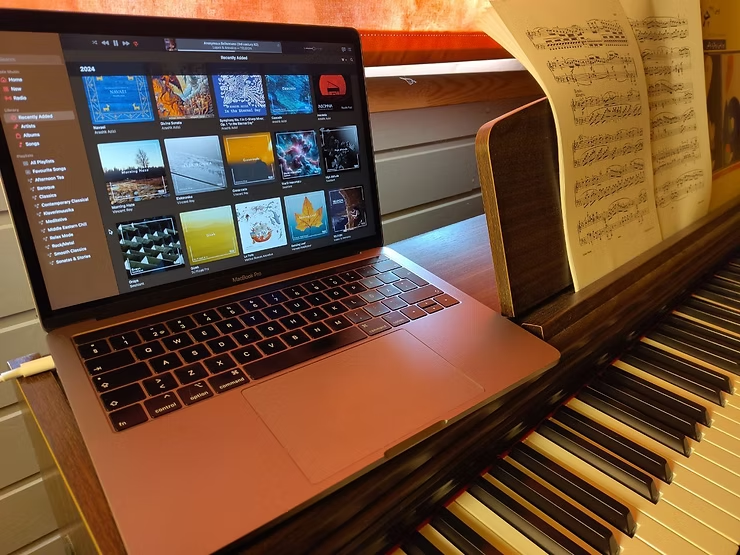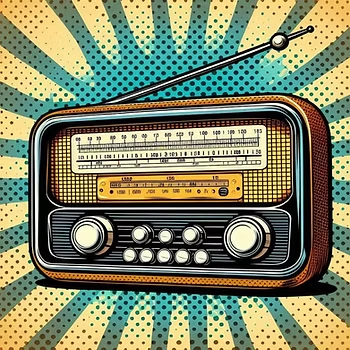
Automatic playlists
All the streaming services use different kinds of playlists and radio channels to attract more and more audiences. Getting on these playlists requires hard work and lots of patience. But once you are on them, you will start receiving more streams every day.
That’s where your music quality will start to show itself. If you have done everything right so far, creating high-quality music, choosing the right target audience, and turning the audience into fans, then appearing on automatic playlists will be a blessing from the skies.
People start listening to your track on radio channels or other automated playlists and some will like it and start saving your track or adding it to their playlist. The streaming platform will consider that a victory as they helped their users find new music from a new independent artist that they actually like. Therefore you are considered a likable artist for the platform in your own genre and mood of music. So the streaming platform will keep appearing your music in more automatic playlists and more people will like your track and become your fan and so on. You will be on an endless loop of getting noticed.
Well, that’s all nice, but how can we get on automatic playlists?
How does it work?
Every streaming service has its own unique algorithm to create autonomous playlists for its users. Therefore it’s not possible to come up with one solution for all of the platforms. Although there are some universal laws that you can follow to increase your chance of appearing in an automatic playlist.
Basically, your music will start featuring in radio channels when the streaming service starts to know you and your music. To do that you need to have enough audience in the first place.
Most music streaming services don’t analyze your music deeply. They start categorizing your music based on the people that listen to it, not on the music itself. Besides the main genre and BPM (beat per minute), most of the streaming services won’t go deeper in analyzing your music with Pandora music platform as an exception of course. So the main way for them to really know your music and categorize it is based on the people who are listening to your music.
Streaming platforms know their audience. They know what kind of music they listen to, what is their listening habit and much more. When a specific group of people starts listening to your music, you as the artist, and your music will be validated based on them.
If you have less than one thousand listeners or followers, it is almost impossible for any platform to categorize your music and feature it on automatic playlists. The more audience you have, the more you are known to the platform, needless to say, the more audience you have, the more accurately your music will be categorized too.
Let’s go through the process with an example. Let’s imagine a pop singer-songwriter playing acoustic guitar and singing. As this musician starts to release their music, streaming platforms start to analyze their music based on the people listening to them. After a while, these platforms will start verifying this musician and put their music in the pop-vocal-acoustic category.
Now, if our musician has a hand in jazz music, they might release some instrumental jazz and blues songs too. As an audience, this is just amazing to see one musician can create awesome music in both of these genres. But what happens to the AI engine in the music streaming platforms? The AI will recognize that this musician has some audiences from pop acoustic and vocal genres and some audiences from instrumental jazz and blues genres. Well, if our musician does not have a lot of monthly listeners, and I mean more than a hundred thousand a month, it is almost impossible for the streaming platform to decide where to put their music. Therefore most probably their music won’t be shared on automatic playlists and radios at all until more information has been gathered.
So as much as working on different genres as a musician is a good thing, it is not helpful when it comes to recognition by AI.
Unlike albums, playlists are mostly based on mood, not genre. Until you become a famous artist and people search for your music specifically, you need to go with the flow of playlists.
If you are an experimental artist who tries different moods and genres, beware that streaming platforms will have a hard time recognizing you, therefore you’ll get to be featured on algorithmic playlists, way later than a normal artist.
One of the ways to solve this problem might be to define different projects. Instead of releasing albums and singles with different genres and moods all under your artist’s name, you can define different projects with different names and create an artist account for each project. This way, each project will be more to the point and easier for streaming platforms to analyze its music based on its targeted audience.
Another solution would be to keep releasing music in the same mood or genre until you get some recognition from streaming platforms and established minimum monthly listeners on them. Then you can start releasing different pieces of music. Since you already have an established audience in this scenario, and getting featured on many automatic or manual playlists, it won’t take that long for the streaming platforms to recognize your new and different releases and put them in the right categories.







